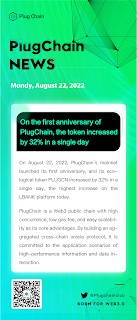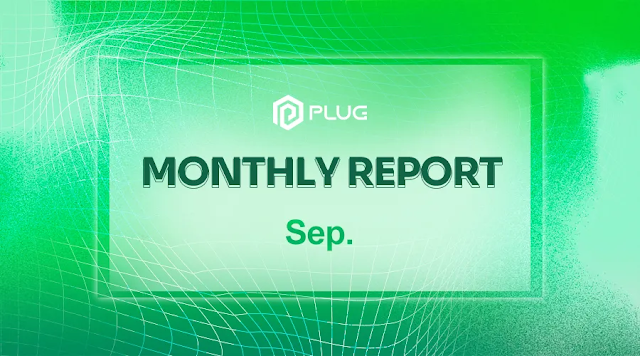Crypto Market Analysis Report 2023, Significant Recovery of Crypto Market
Foreword: Compared with the end of 2022, the Crypto
market seems to be gradually waking up and getting rid of the downturn of the
bear market. The total market value has increased from US$831.8 billion on
January 1, 2023 to US$1.238 trillion on March 31. The prices of BTC and ETH are
now hovering around $29,000 and $1,900 respectively. Among them, BTC performed
particularly well, with an increase of nearly 72% this quarter.
This article analyzes the value and potential of
the Crypto market in Q1 of 2023 from multiple dimensions, and the crypto market
seems to be recovering significantly.
01.Strong
start, Crypto rebounds to $1.2 trillion
The crypto market is off to a strong start in 2023,
with a total crypto market capitalization of $1.2 trillion at the end of Q1.
This reflects a growth rate of 48.9%, or $406 billion in absolute terms,
compared to the end-2022 performance of $829 billion.
At the same time, the average daily trading volume
has also rebounded, rising to US$77 billion in 2023 Q1 after experiencing a
quarter-on-quarter contraction in 2022 Q4 (-33%), a quarter-on-quarter increase
of 30%. Transaction volumes rebounded in January 2023 when the market
recovered. Then in early March, trading volumes spiked due to market volatility
caused by the banking crisis.
Trading volumes have gradually declined since the
end of March, when Binance removed some of the transaction fee reductions for
$BTC.
02.
Bitcoin soared, achieving a positive rate of return of 72.4%
In 2023 Q1, among all major asset classes, Bitcoin
topped the list with a quarterly return of 72.4%, followed by the Nasdaq Index
(15.7%) and gold (8.4%).
In April, Bitcoin broke through $30,000, a rebound
that was even more dramatic than the nearly 20% rise in the Nasdaq 100 Index
(Bitcoin tends to rise in tandem with the index), and recovered the digital
currency since 2022. The partial losses follow a series of cryptocurrency-related
crashes. Still, Bitcoin is down more than 50% from its November 2021 all-time
high.
It's not hard to see that even with the setback,
bitcoin's rally has intensified over the past month following the collapse of
three U.S. banks, rekindling a narrative among bitcoin bulls that it offers a
An attractive alternative to traditional finance.
Elsewhere, liquidity fell to a 10-month low after
market makers were cut off from access to U.S. banking funding from Silvergate
Capital (SI.US) and Signature Bank (SBNY.US), analysts said. kind of backlash,
at least in part. As trading volumes drop, price swings can appear more
dramatic.
But to be sure, the cryptocurrency industry still
faces enormous scrutiny.
03.Stablecoins
down 4.5%, with $USDC and $BUSD taking the biggest losses
The market cap of the top 15 stablecoins fell by
4.5% ($6.2 billion) due to the shutdown of Binance USD ($BUSD) by Paxos and the
brief depeg event of USD Coin ($USDC) amid the SVB collapse.
In February 2023, the New York Financial Services
Agency ordered the stablecoin issuer Paxos Trust Co. to stop issuing new BUSD
tokens, but the BUSD redemption business will not be affected. After the
announcement of the suspension of the issuance of BUSD, the FUD sentiment in
the market has been further deepened, and regulatory issues are hitting the
prices of BNB and BUSD. And BUSD also showed a slight de-coupling phenomenon.
In March 2023, after Circle, one of the largest
stablecoin issuers in the currency circle, tweeted that US$3.3 billion of its
approximately US$40 billion USDC reserves were stored in Silicon Valley Bank,
the price of its stablecoin USDC plummeted. The anchor state continued to
expand, and even triggered a run on the market.
However, Tether ($USDT), the largest stablecoin,
further strengthened its market share, increasing its market cap by 20.5%
($13.6 billion). $USDC and $BUSD lost 26.9% and 54.5% respectively, erasing all
gains in 2022.
Meanwhile, True USD ($TUSD) entered the top five
stablecoins, surpassing $FRAX. Binance minted 130 million $TUSD, followed by
Tron with another 750 million, driving a 169.3% increase in its market cap. The
market capitalization of $GUSD and $USDP dropped by 32.0% and 12.3%
respectively.
04.The
market value of DeFi rose by about 65.2%, or 29.6 billion US dollars
The market value of the DeFi sector jumped 65.2% in
2023 Q1, or $29.6 billion. Mainly driven by the good performance of the liquid
staking protocol governance token.
With the completion of the Ethereum Shapella upgrade,
the market capitalization of the liquidity staking protocol’s governance token
increased by 210.9% in Q1. At present, it has surpassed the lending agreement
and has become the third largest sector of DeFi.
For users, liquidity staking is attractive in the
following aspects: first, it is user-friendly, and it does not require 32 ETH
to participate in network verification and benefit from it, which is a
relatively stable and safe fixed-income product; the second is Pledged tokens
can be withdrawn at any time without threshold; the third is to release
liquidity, thereby improving the efficiency of capital use; the fourth is that
users can not only receive verification benefits, but also participate in
revenue governance.
Additionally, liquidity staking is expected to grow
further, as ETH staking ratios are significantly lower than other L1 tokens.
Only 14% of ETH is currently staked, while 58% is the average for L1 staked.
The current market consensus is that once the Shanghai upgrade is successful
and the liquidity risk and uncertainty of the lock-up period disappear, more
funds will flow into the pledge agreement.
Liquidity staking protocols in the current market
are facing fierce competition, and the newly born similar products are mainly
working in three directions: one is to cooperate with other Dapps to provide
more application scenarios for the generated derivative tokens; the other is to
Strive to deploy on more L1 chains to maximize TVL; the third is to focus on
improving the security level of the protocol.
To be precise, the future of the liquidity staking
protocol depends on the overall long-term development of the public chain, and
its security will be the top priority. In addition, factors such as value
capture capabilities and on-chain DeFi ecological construction also have a
considerable impact on the protocol.
05.NFT
market picks up, Blur replaces OpenSea as the largest NFT trading market
NFT trading volume has rebounded sharply, jumping
from $2.1 billion in Q4 2022 to $4.5 billion in Q1 2023, an increase of 68%.
Most of the NFT trading volume comes from Blur, a
new NFT trading market launched in October 2022. It took just 6 months to
overthrow former market leader OpenSea, growing its market share from 52.8% in
December 2022 to 71.8% in March 2023. Meanwhile, OpenSea's market share shrank
from 29.3 percent to 21.7 percent during the same period.
The performance of the Blur platform is so yaoyao,
it is true that the budget-conscious airdrop has played a very important role
in it. But what really retains users is Blur's excellent performance: the Blur
platform is simple and intuitive, strengthens the NFT infrastructure, and
improves professional traders' experience in the NFT market. The second is the
operation speed ten times faster than other NFT markets, allowing users to
quickly capture scarce NFT resources. Then there are zero fees and custom
royalties that firmly grasp the common user needs in the current market. Blur
is also known as "the best NFT viewing tool" because of its
professionalism and convenience.
Obviously, the emergence of Blur broke the NFT
market monopolized by OpenSea for a long time, and introduced a new round of
competition in the NFT market. When the market is large enough, healthy
competition will bring a positive cycle to the entire ecosystem to promote
development.
06.SUI
strong IEO, the new public chain is blocked and long
Last year's Aptos airdrop created a wave of
enthusiasm for the new public chain, which was slightly inferior to its equally
famous Sui public chain. We all know that Sui and Aptos came from the same
school, they both came from Facebook's Diem. Moreover, both teams explore and
launch new public chains based on the Diem programming language Move.
Compared with airdrops, although it has the
advantage of attracting a large number of community users and attention in the
short term, it also has the disadvantage of selling pressure in the secondary
market. When the wool party decided to follow suit in Aptos, it chose IEO. At
present, Binance, Bybit, OKX, Huobi and other major exchanges have listed their
native token SUI. It is worth noting that if you successfully bought $0.1 SUI
in the IEO event, you will now have a super high rate of return! It is a pity
that the currency circle community that did not successfully participate.
Of course, for the public chain track, how to tell the story of the public chain well, describe the story of the public chain into the ecology and implement it is very important. For example, Ethereum’s smart contracts, Cosmos and Polkadot for cross-chain narratives, Solana, which focuses on high performance, and PlugChain, which works on the dual-track track of oracle machines and cross-chain protocols. For SUI, it naturally has its own public chain narrative. In terms of technology trends or industry narratives, Sui focuses on faster, cheaper, and friendlier.
If layer-1 blockchains are to succeed, they must
enable new use cases and frictionless experiences. Sui, through its
object-based data model, can be extended to bypass consensus for fast
transactions and grant the ability to store arbitrary data values, which is
obviously an original technical advantage of Sui. Additionally, Sui allows for
Android-style transaction signing permissions and PTBs, features that
facilitate large-scale batch processing of atomically composable transactions.
In fact, the development potential of the public
chain is huge, but the road is long and difficult, and it is easier to know
than to do. The narrative of every successful public chain is based on
countless technical polishing day and night and a long development cycle. And
the public chain that can really lead the next round of industry narratives
must reconstruct new things based on the logic of crypto, rather than
optimizing existing things to add icing on the cake.
In short, the public chain never lacks stories, but
lacks perseverance and courage!
Conclusion: Crypto's first half of 2023 has left most of the
encryption practitioners in it with mixed feelings. On the one hand, several
banks in the United States have suffered a run crisis, and regulators have
continued to suppress centralized exchanges, which has impacted market
confidence; but on the other hand, encrypted assets represented by BTC and ETH
have performed quite well in the secondary market. In addition to price
factors, we also believe that multiple signals within the crypto space are
showing signs of strong recovery and growth. Coupled with the Web3.0 wave in
Hong Kong, it has also injected new vitality into the encryption market.









Comments
Post a Comment